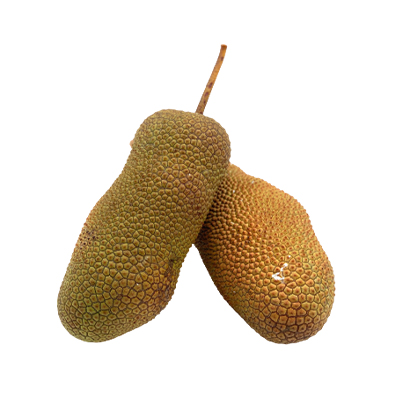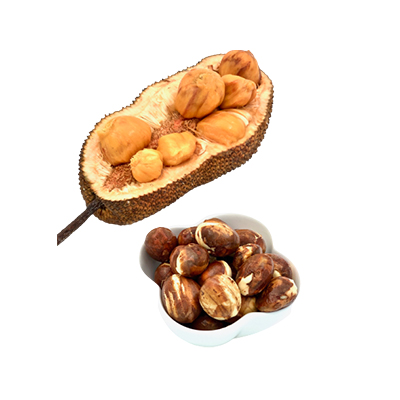Cempedak
Artocarpus integer (Thunb.) Merr.
Moraceae
Location in our garden
Orchard
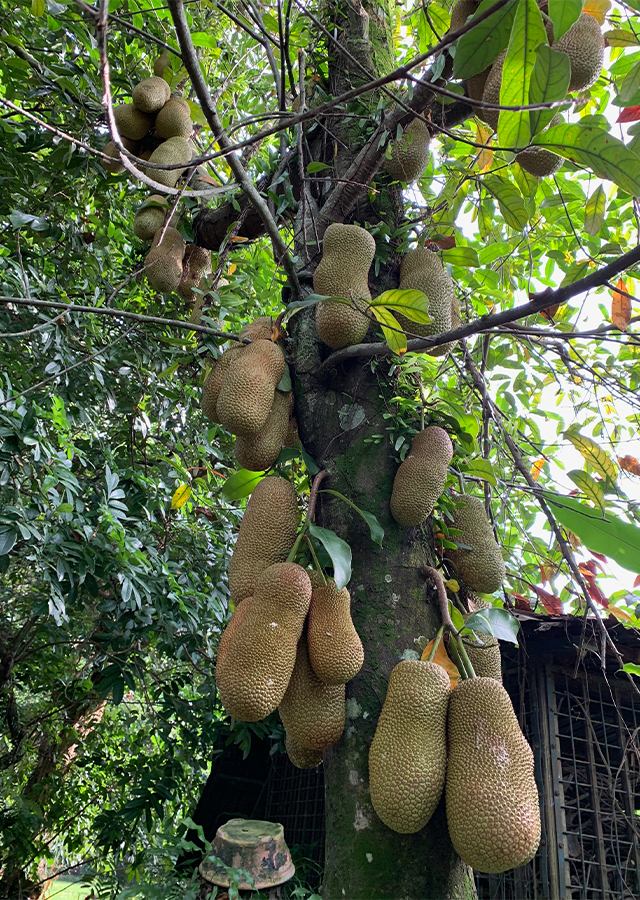
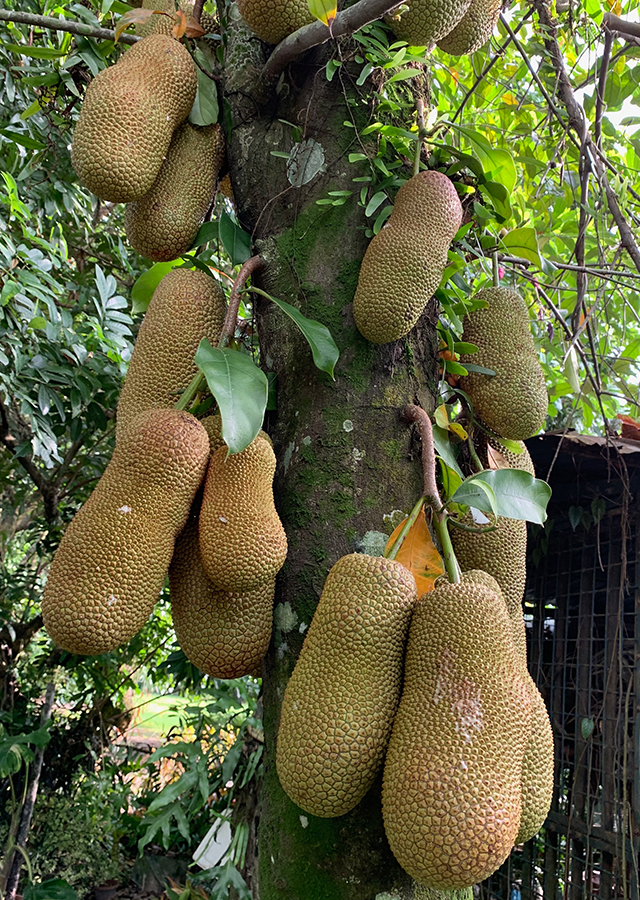
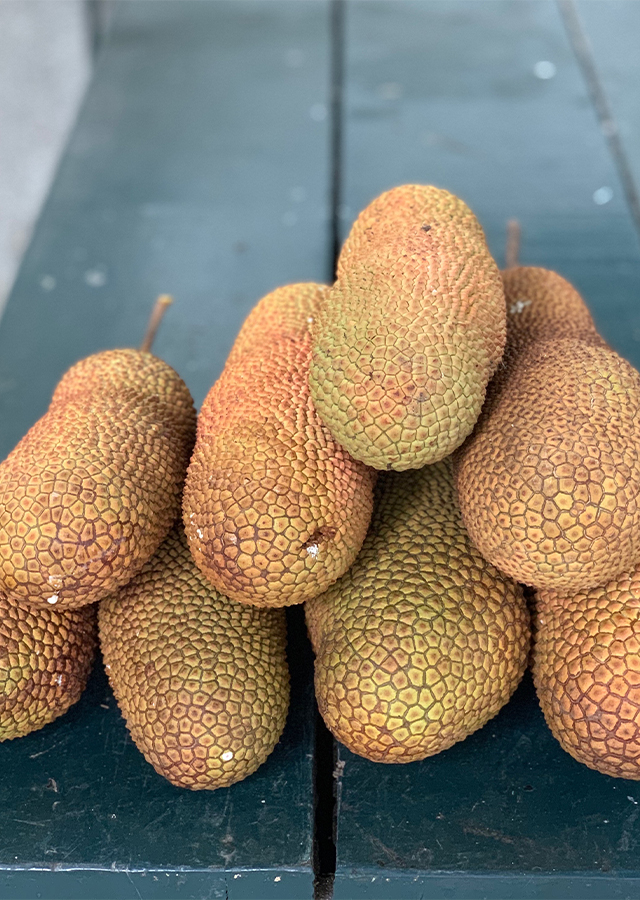
Synonym
Artocarpus champeden (Lour.) Stokes
Artocarpus hirsutissimus Kurz
Artocarpus integrifolius L.f.
Habitus
Trees. A fast-growing, evergreen forest tree with a dense, rounded crown, can grow up to 10-24 m tall
Part Used
Leaves
Seeds
Bark
Fruit
Roots
Growing Requirements
Full Sunshine
Need Shade
Habitat
Forest
Overview
Cempedak is native to Indonesia, Brunei, Peninsular Malaysia, and Thailand. The tree is well suited for reforestation projects in association with other species. Unripe ‘cempedak’ fruit is consumed as a vegetable and cooked in coconut milk, and eaten along with other vegetables, or in soup. It is also much planted in forestry and sometimes grown as an ornamental.
Vernacular Names
Tsempedak (Tagalog-Philippines), Koparamitsu (Japanese), Champada (Thai), Mit to nu (Vietnamese), Katol (Hindi), Chempedak (Malay), Sonekadat (Burmese).
Agroecology
It is a plant of the lowland humid tropics, growing best at an altitude below 1,200 m, in its native range it is always restricted to regions without a distinct dry season. Grows best in areas where annual daytime temperatures are within the range of 22-38 °C, but can tolerate 16-47 °C. Prefers a mean annual rainfall in the range of 2,200-3,500 mm, but tolerates 1,250-4,500 mm. Prefers a deep, well-drained fertile soil, also prefers a pH in the range of 4.5-6, tolerating 4-6.5.
Morphology
- Bark - greyish-brown.
- Leaves - alternate, obovate to elliptic, covered with thin and stiff brown hairs, 5 to 25 cm long, 2.5 to 12 cm wide. Leaf tips are covered by stipules, also covered with brown hairs.
- Flowers - borne on solitary stalked inflorescences. Male flowering head is cylindrical, 3.5 to 5 cm long and 1 cm wide, yellowish-white in color, monoecious.
- Fruits - syncarpous, cylindrical to spherical in shape, 10 to 15 cm across, 20 to 35 cm long. Skin is thin and leathery, greening, yellowish to brownish in color, patterned with pentagonal raised protuberances or flat eye facets.
- Seeds - large, surrounded by fleshy, edible arils.
Cultivation
It can be propagated from seeds, budding, or grafting.
Chemical Constituents
Alkaloids, flavonoids, phenolic, saponins, carotenoid, tannins, malic acid, citric acid and succinic acid.
Traditional Medicinal Uses
- Unripe fruit is astringent and ripe fruit is laxative.
- The wood is sedative.
- Studies have suggested antioxidant, antibacterial, anti-inflammatory, antimalarial properties.
- The Iban in Sarawak, apply a paste of the inner bark to heal wounds and prevent infection.
- In Peninsular Malaysia, juice of the roots has been used for fever. The ash from burnt leaves, maize and coconut shell has been used to treat ulcers.
- An infusion of the root ash is mixed with Selaginella ash and prescribed as a protective medicine after childbirth.
- The bark is used in poultices for painful feet, hands and for ulcers.
- In the Philippines, the leaves are heated and applied to wounds. The pith has been reported to cause abortion.
Part Used
Reference Sources
- Fern, Ken. (2014). Useful Tropical Plants. Artocarpus integer. http://tropical.theferns.info/viewtropical.php?id=Artocarpus+integer 03-03-2021.
- Growables. (2020). Grow Florida Edibles. Chempedak - Artocarpus integer. https://www.growables.org/information/TropicalFruit/Chempedak.htm 01-03-2021.
- NParks. (NO date). Flora & Fauna Web. Artocarpus integer (Thunb.) Merr. https://www.nparks.gov.sg/florafaunaweb/flora/3/3/3309 01-03-2021.
- PFAF. (NO date). Artocarpus integer - (Thunb.) Merr. https://pfaf.org/user/Plant.aspx?LatinName=Artocarpus+integer 01-03-2021
- Pl@nt Use. (2016). Artocarpus integer (PROSEA). https://uses.plantnet-project.org/en/Artocarpus_integer_(PROSEA) 01-03-2021.
- Pui, L. P, and Karim, R., et. al. (2018). Physicochemical and sensory properties of selected ‘cempedak’ (Artocarpus integer L.) fruit varieties. International Food Research Journal Vol. 25(2): 861-869. http://www.ifrj.upm.edu.my/25%20(02)%202018/(57).pdf. 01-03-2021.
- StuartXchange. (2020). Philippine Medicinal Plants. Tsempedak. http://www.stuartxchange.org/Tsempedak 01-03-2021.



